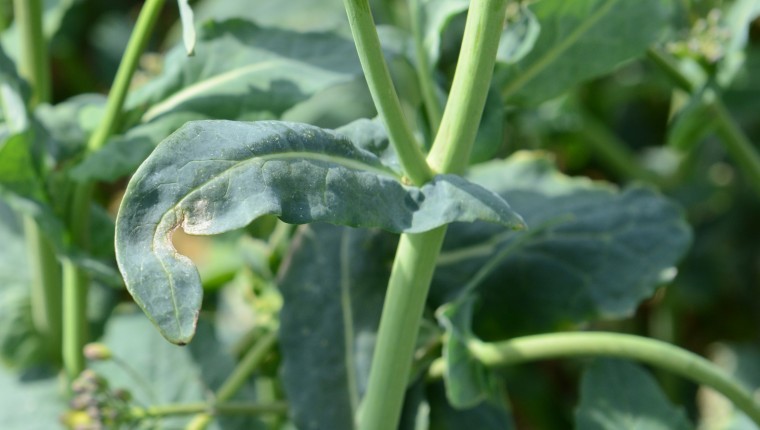With light leaf spot causing greater issues for brassica growers over the winter, the Syngenta Brassica Alert disease warning system is now spore trapping for the pathogen – to provide valuable notification of risks, to better manage spray timing.
Managed by the Allium & Brassica Centre, Brassica Alert forecasts pathogen risks through a combination of weather data and active spore trapping for ringspot, white blister and now light leaf spot at sites in Lincolnshire.
By registering for Brassica Alert growers and agronomists can incorporate the information to devise appropriate fungicide strategies and timing, advises Syngenta field technical manager, Simon Jackson.
“Historically growers would maintain fungicide programmes using Amistar Top for ringspot and white blister until temperatures dropped consistently below 10°C – typically around mid-November, but could be extended in mild autumn.
“However, light leaf spot remains active at far lower temperatures, down to 4°C, so continues to cause outbreaks right through the winter,” he warned.
“It’s of particular concern to Brussels sprout growers, with the pathogen continuing to spread further south and across Lincolnshire in recent seasons.”
Wet weather after the oilseed rape harvest is considered a precursor to spore release, which indicates that this season could be of greater concern for brassica crop growers. Especially in areas where OSR stubble trash has been left on the surface with direct drilling of subsequent cereal crops.
Simon’s experience of light leaf spot spore monitoring in Scotland has shown spore release and aerial movement right through the winter. “Once infection is in the crop, uncontrolled it will continue to develop and spread by rain splash in wet conditions.
“Knowing the risk and timing of spore infection can significantly help with preventative fungicide timing and keeping the crop clean through the winter,” he advised.
Carl Sharp, agronomist with the Allium & Brassica Centre, believes that Brassica Alert has given growers greater flexibility and confidence in moving from a standard fixed interval fungicide programme, to selected targeted applications using the most suitable products for the timing.
“Our independent trials have shown that two targeted applications using Brassica Alert, gave comparative disease control, marketable yield and quality, whilst saving two or three sprays from a standard programme,” he reported.
Spore monitoring, to determine pathogen risks, has been integral to the success and reliability of Brassica Alert, added Carl. “The combination of climatic data and spore trapping has given consistent results, particularly with Ringspot. We can use a similar model to determine the risk for light leaf spot, to help growers select appropriate controls.”
He pointed out that the symptoms of light leaf spot have typically been seen from mid-October onwards, but its appearance is extremely weather dependent that will make the forecasting most valuable.
“Brassica Alert is an excellent tool which aids product choice and timing, to maximise the most of what we have,” Carl advised.
To sign up for Brassica Alert texts, visit www.syngenta.co.uk/brassica-alert




